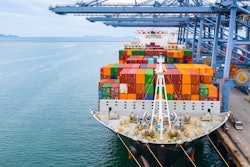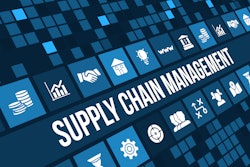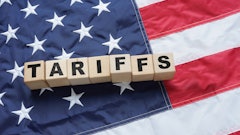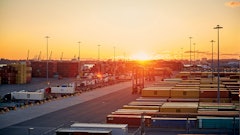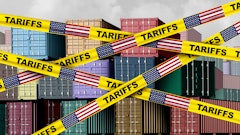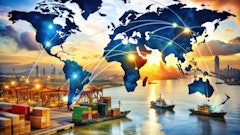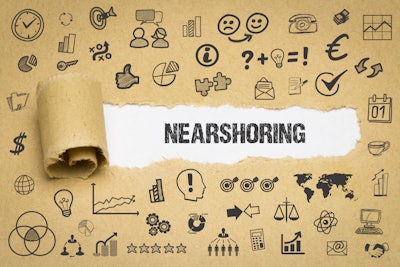
Let’s face it: the world of procurement and supply chain management has changed dramatically. As global risks, tariffs, and supply chain shocks continue to escalate, companies are rethinking their strategies nearshoring is quickly moving from a niche tactic to a strategic imperative.
The April 2 Liberation Day tariff announcement by President Donald Trump kicked off another wave of nearshoring considerations as the heaviest duties were placed on China.
However, independent of tariffs, nearshoring should be considered as part of an overall supply chain strategy.
Nearshoring is the business strategy of relocating operations, production, or services to a nearby country, typically one that shares a border or is within the same region as the company’s home country. Simply put, the closer a trading partner is, the greater efficiency there is from decreasing travel times to communicating in the same time zone. For nearshoring to make sense, the benefits of proximity must be greater than any cost advantage an offshore supplier might have.
The roots of nearshoring in North America and Europe
The North American Free Trade Agreement (NAFTA) in 1994 is seen as the major trigger of nearshoring in North America. NAFTA eliminated most tariffs on goods traded between the United States, Mexico, and Canada, making it far more attractive and cost-effective for U.S. and other foreign firms to locate production in Mexico and export finished products back to the United States. This, along with infrastructure improvements on the U.S.-Mexico border increased nearshoring in North America between the United States, Mexico, and Canada.
Across the pond, the conditions for nearshoring were set about 1 year earlier, when the European Union was officially established by the Maastricht Treaty in 1993. The lower-cost labor pool of Central and Eastern Europe (CEE) and proximity to Western Europe led to an increase in nearshoring and the CEE being called “the new China” for European manufacturing.
ESG and nearshoring
Environmental, social, and governance (ESG) initiatives led by both governments and investors also drove nearshoring initiatives.
Nearshoring reduces pollution by shortening transportation routes, marine shipping accounts for 18-30% of nitrogen oxides and 9% of sulfur oxides.
The ESG benefits of nearshoring go well beyond just environmental gains. Nearshoring opens doors for companies to invest in green infrastructure, adopt renewable energy, and build sustainable facilities in their new locations. Being closer to home makes it easier for companies to enforce responsible procurement practices, source materials sustainably, and ensure waste is managed responsibly.
Nearshoring can help companies deliver on their commitments to fair labor practices, better working conditions, and higher wages. Proximity makes it easier to monitor compliance with labor laws and ethical standards, and it also fosters more transparent and traceable supply chains.
Nearshoring can also have a positive ripple effect in local communities. It creates jobs, supports skills development, and encourages technology transfer and knowledge sharing. And because nearshoring often involves collaboration with local partners, it can spark new ideas and drive continuous improvement in sustainability practices.
Overall, nearshoring isn’t just about logistics or cost savings- it’s a strategic move that aligns with broader ESG goals. By reducing emissions, promoting sustainable practices, supporting local communities, and enhancing supply chain transparency, nearshoring helps companies build a more resilient, responsible, and future-ready business.
Just-in-time
Just-in-time (JIT) is a way of managing inventory so that materials and products show up or get made right when they’re needed-no sooner, no later. This approach helps companies avoid having too much stuff sitting around, which saves money and cuts down on waste.
Nearshoring supports JIT by shortening supply chains, reducing transportation times, and making it easier to coordinate deliveries so that materials arrive "just in time" for production.
Proximity allows for better communication, faster response to demand changes, and easier problem-solving – a big difference in time zone can lead to inefficient delays with an offshore partner who might be asleep when you need to move quickly.
Nearshoring and JIT actually work really well together. By moving suppliers and manufacturers closer to each other — say, to a nearby country instead of halfway around the world — nearshoring makes it much easier to pull off JIT. It shortens shipping times and helps companies react faster if something goes wrong. After all the global supply chain disruptions lately, a lot of businesses are now using both strategies at once. They’re turning to nearshoring to bring back the speed and efficiency of JIT, but with the added bonus of more flexibility and less risk if things don’t go as planned.
Nearshoring and always on procurement
Nearshoring is just one component of a strategic approach to supply chain management, which can be defined as always on procurement, a new, proactive system of building and maintaining decision-ready supplier pools. This is a continuous, always-on process where the supplier pool is refreshed using AI to automatically collect, vet, and validate supplier data. Instead of just looking close or nearshore, when costs increase from abroad, the operating mantra for always-on procurement is to always be looking and sourcing to have the most robust supplier base and options.
Why always-on procurement is key to nearshoring success
As nearshoring becomes a strategic imperative for modern supply chains, it’s clear that success requires more than simply moving suppliers closer to home. The real differentiator is the adoption of an always-on procurement mindset proactive, dynamic approach that continuously refreshes and optimizes the supplier base using data, technology, and strategic relationships.
Unlike traditional, episodic sourcing, always-on procurement leverages AI and digital tools to constantly collect, vet, and validate supplier data, ensuring procurement teams are decision-ready at all times. This approach is especially vital in the context of nearshoring, where market conditions, tariffs, and supplier capabilities can shift rapidly. By maintaining a continuously updated pool of qualified suppliers, both regional and global organizations can quickly pivot in response to disruptions, cost changes, or new opportunities.
This continuous improvement mindset also supports JIT operations, as procurement teams can quickly identify and engage suppliers capable of meeting tight delivery windows and adapting to fluctuating demand. The result is a more resilient, agile, and efficient supply chain, one that can withstand shocks, reduce waste, and capitalize on local advantages without sacrificing global competitiveness.
Moreover, always-on procurement fosters stronger supplier relationships, enhances spend visibility, and enables better risk management, which is critical in an era defined by uncertainty and complexity. By embedding continuous feedback loops, leveraging spend analytics, and standardizing procurement processes, organizations can drive operational excellence and long-term value from their nearshoring strategies.
Nearshoring delivers its greatest impact when paired with an always-on procurement strategy. This combination empowers organizations to build robust, flexible, and sustainable supply chains, ready for whatever challenges and opportunities the future may bring.





